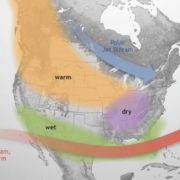Shift to La Niña for the Coming Winter Could Affect the Next Water Year in the West
While California and Nevada remain virtually drought-free, climate experts say extreme heat and wildfire risk may continue plaguing the West for months.
Scientists with the National Oceanic and Atmospheric Administration said during a webinar Monday that ongoing heat events across the West present a major risk to vulnerable communities, despite a good water supply outlook for the region.



